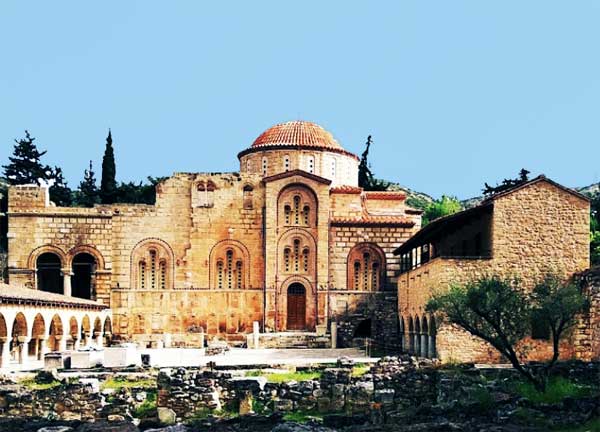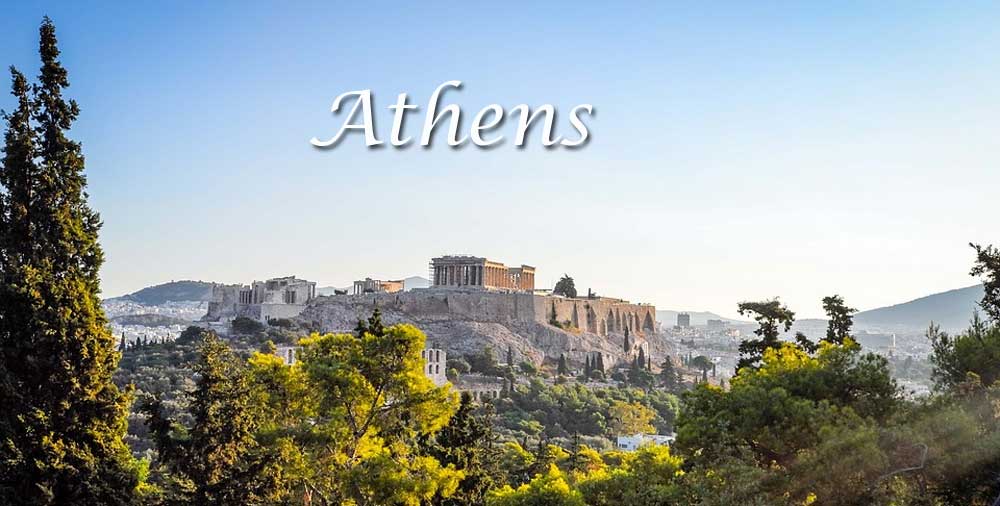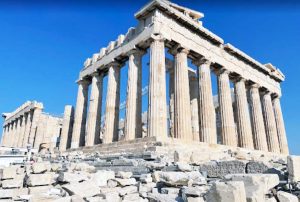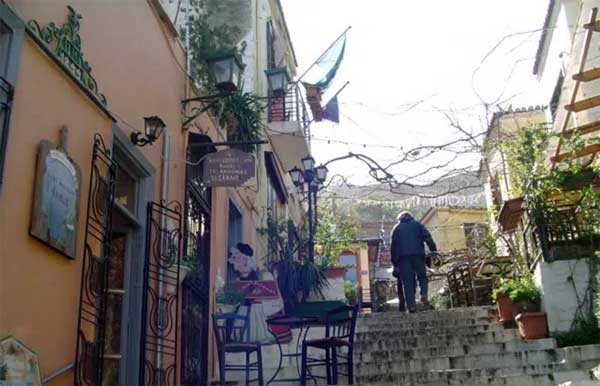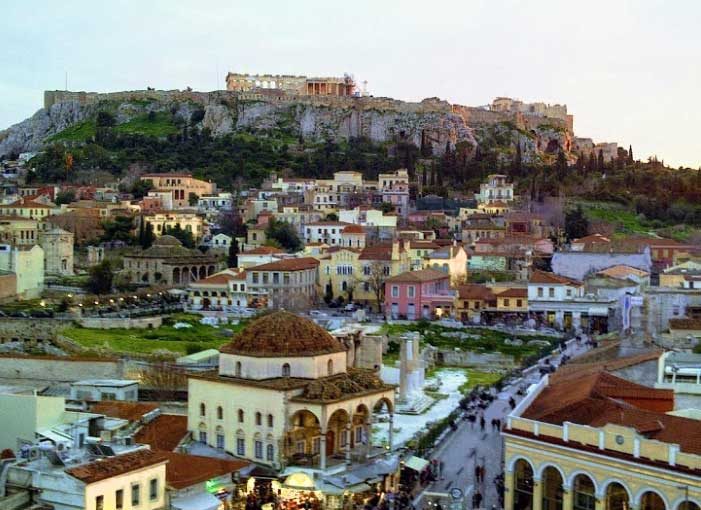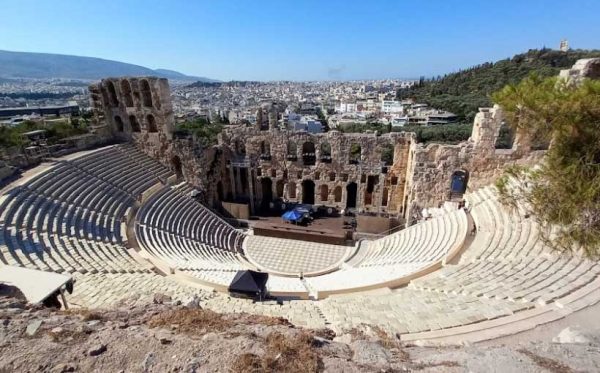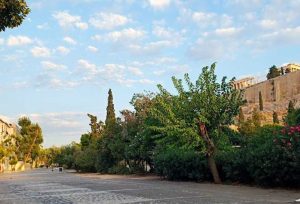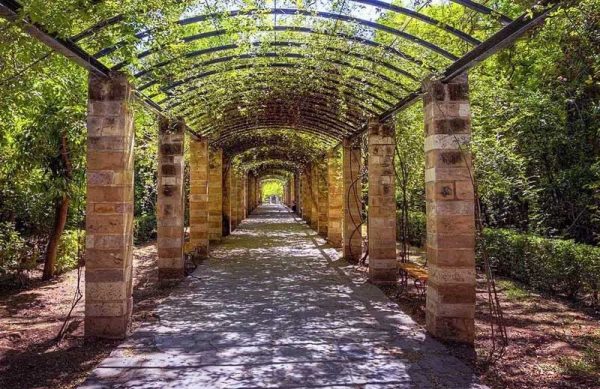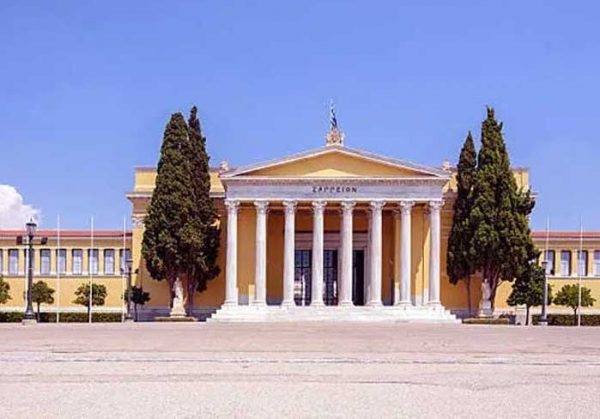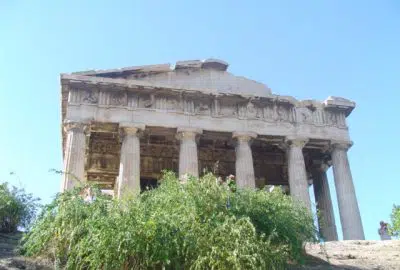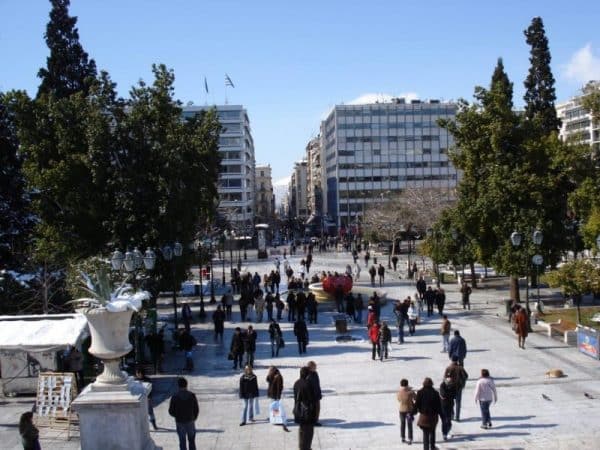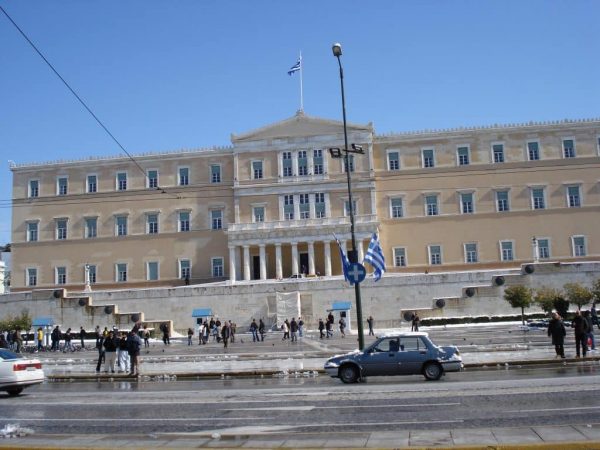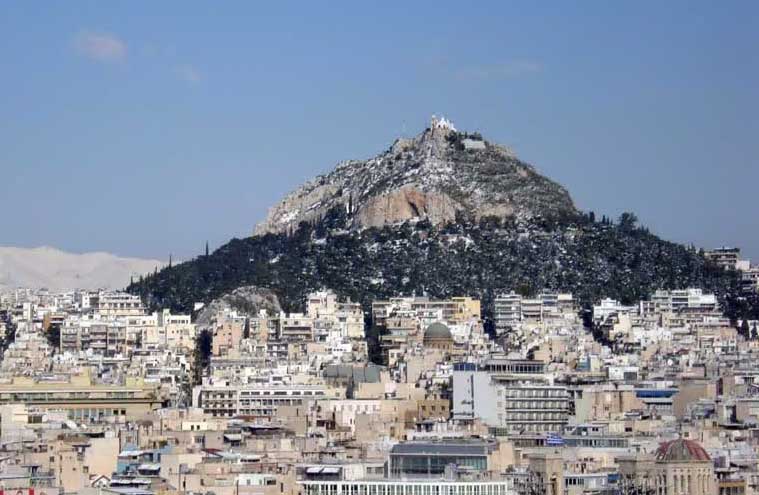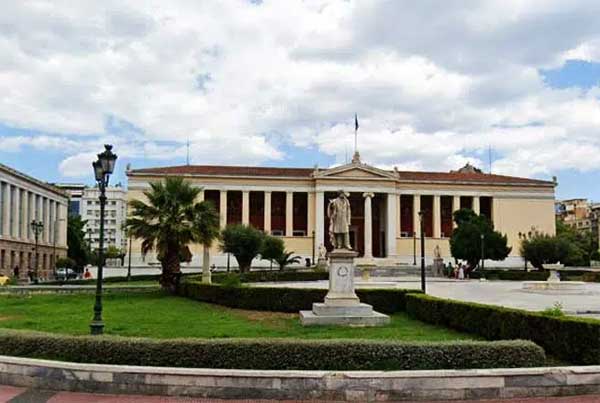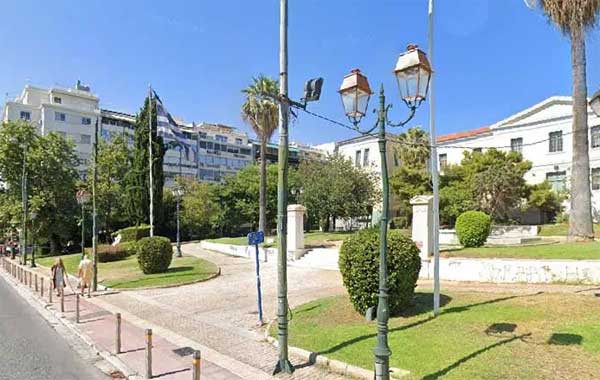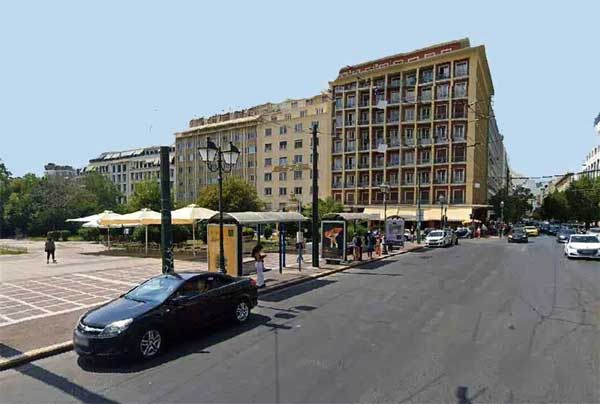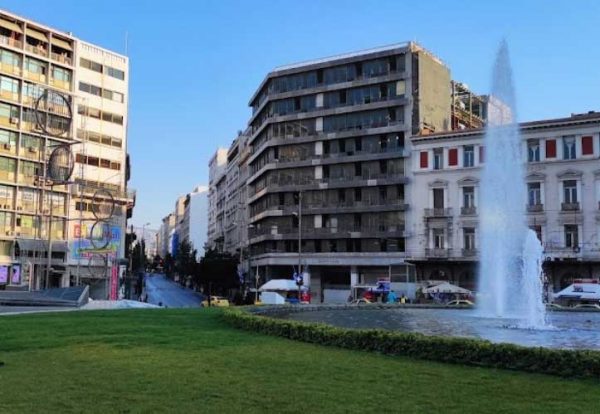Places to go and sights to see in Athens
Athens has no end of attractions, sights and museums, and if it is your first time in the city, some of them are essential. There are more linked above, but you won’t want to miss the Acropolis and Parthenon, the New Acropolis Museum, and the sunset at Cape Sounion.
Acropolis
A trademark of the city, it is the number one attraction of Athens. Entering the archaeological site, we face the Propylaean complex. In front of the right wing is the small temple of Athena Nike.
But everyone’s eyes are drawn to the Parthenon, a temple made almost entirely of Pentelian marble, dedicated to the goddess Athens, inside which was her golden ivory statue.
Directly opposite the Parthenon, on the north side of the Acropolis, stands the Erechtheion, the temple with the famous Caryatids’ prostration, where six marble daughters replace the columns. Leaving the archaeological site on the right there is a rock, Areios Pagos, seat of the oldest court of Athens. Apostle Paul also spoke here in 52 AD. for Christianity. Climb the few steps and enjoy the view of the city from above.
Plaka
The oldest district of today’s Athens, with its neoclassical houses and narrow cobbled streets, is also one of the most touristic, due to its proximity to the Acropolis. The main street of Hadrianou and the surrounding streets and pedestrian streets are full of tourist shops, cafes, traditional taverns and restaurants.
The area also has many old churches, some of which are Byzantine, such as the Transfiguration of the Savior which dates from the 11th century. Its narrow streets house several museums, such as the Children’s Museum, the Kanellopoulos Museum and the Museum of Greek Folk Organs, while the visitor will also see monuments such as that of Lysikrates, also known as the “Lantern of Diogenes”, the mosque, but also archaeological places such as Hadrian’s Library, the Roman Agora and the hammam, the “Tower of the Winds”.
Monastiraki
Another tourist area of Athens, as it is close to Plaka and the Acropolis. Monastiraki Square, right in front of the electric station, is the starting point for “Yousourum”, the big bazaar on Hephaistou Street, which used to be known for its antique shops, but today also has shops with modern streetwear.
Next to the square is the Tzistaraki mosque, which today houses a collection of ceramics, and the church of Panagia Pantanassa, also known as the “church of the Great Monastery”, from which the square takes its name.
Theatre of Dionysus
On the southern slope of the Acropolis is its second organized archaeological site. Do not pass it by, as here is the Theater of Dionysus, the most important and oldest of the city. In the same area, we find the sponsored monument of Thrasyllus and the Stoa of Eumenos with its successive arches made of porostone.
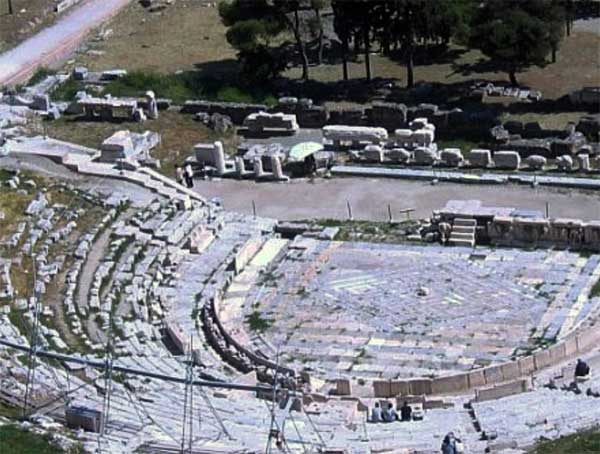
Herodeion
A visit to the Acropolis cannot miss the Herodeion, the famous Roman conservatory (160 AD) that hosts some of the most important performances of the Athens Festival every summer. It has a semicircular shape, an imposing facade of 28 meters high and a capacity of 5-6 thousand spectators. It also has excellent acoustics.
Dionysiou Areopagitou street
The now pedestrianized Dionysiou Areopagitou is one of the most beautiful walking routes in the city, with a view of the Parthenon on one side and the magnificent mansions on the other.
Here is also the New Museum of the Acropolis, next to the Acropolis metro station which is also interesting, as it has casts from the sculptural decoration of the Parthenon on all its levels.
With the unification of the archaeological sites, the shaped street starts from the Olympia and joins Apostolou Pavlou, connecting the archaeological sites of the Olympia, the Theater of Dionysus, the Theater of Herodes Atticus, the Acropolis and the Areopagus.
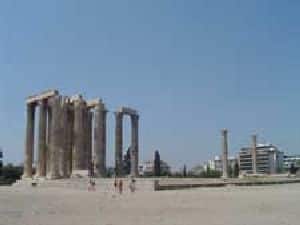


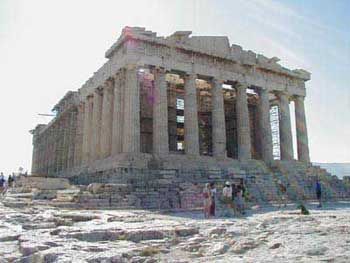
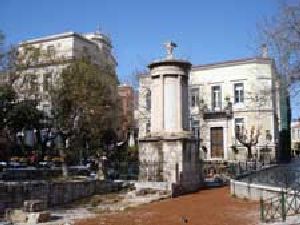

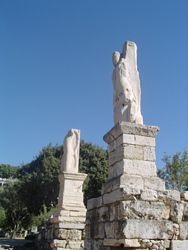
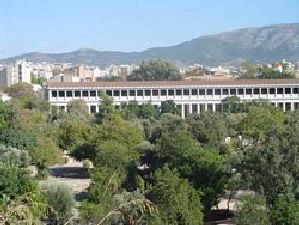
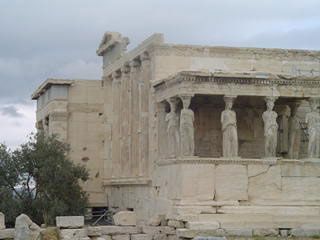
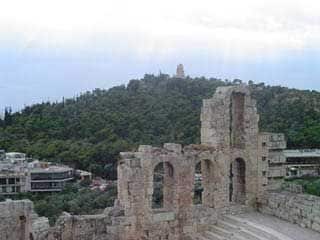
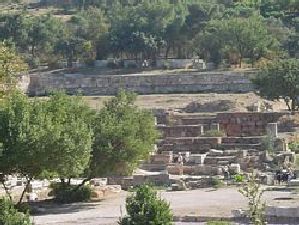


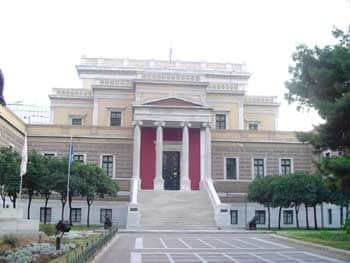
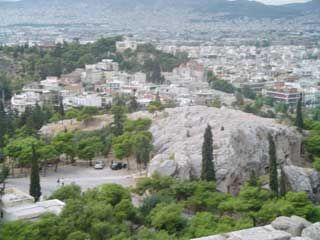

Filopappos hill
From the junction of Dionysiou Areopagitou and Apostolou Pavlou streets, a path starts to the hills of Filopappos and Pnyka. Along the way we meet the post-Byzantine church of Agios Dimitrios of Loubardiaris, as well as traces of the ancient wall of Athens. At the top of the hill is the burial monument of Julius Antiochus Philopappos. Next to the hill of Philopappos or otherwise the hill of the Muses, the hill of Pnyx with the stage where some of the most important politicians of ancient Athens spoke, as here was the gathering of the Church of the Municipality (Demos) of Athens.
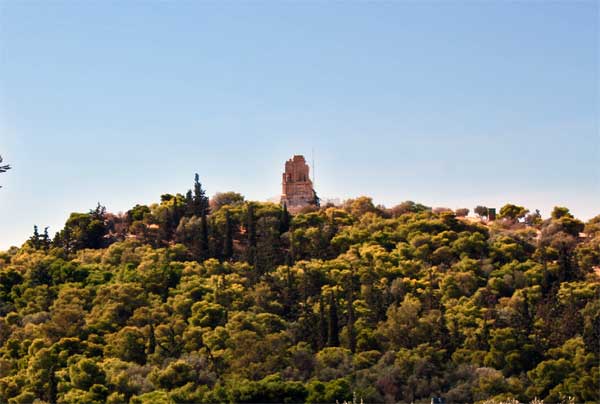
Entering the archeological site from the entrance of Adrianou Street, our attention is drawn to a building that survives almost intact, Thiseio, the temple of Hephaestus, which dominates a small hill, the hill of Agoraios Kolonos. It is the most well-preserved ancient temple in Greece. A little lower, archaeologists have carved the so-called western route, which passes in front of the most important monuments of the political life of the Agora: the ruins of the Vasileos Stoa o, the remains of the Stoa of Eleftherios Zeus, the Register, the Dome and the Vouleuterion. One of the most important monuments of the area is the restored Stoa of Attalos that houses the museum of the Ancient Agora.
Roman Agora
Next to the Ancient Agora, a new market was created with a joint donation of Augustus and Julius Caesar, exclusively for commercial purposes, the one we now call Roman Agora. Its most famous monument is the Tower of the Winds, the Clock of Andronikos or the “Winds” as it is called.
It is an octagonal tower made of Pentelic marble, which is kept in excellent condition. At the top was a weather vane, pointing to one of the eight winds pictured at the top of each side, hence its name. Other important buildings of the area are on the other side of the marble courtyard, the western propylon, or the Gate of the Athena.
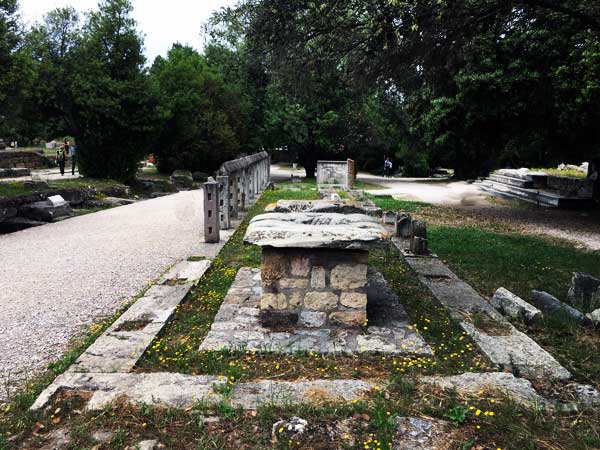
The National Gardens
Southeast of the Greek Parliament is the largest park in the city center and a favorite promenade of the Athenians. The former Royal Garden was designed by Queen Amalia herself and features tall perennial trees, dense shrubs and climbing plants. You will find a beautiful playground, a small zoo, an artificial lake, a children’s library and a Botanical Museum.
The National Gardens were formerly for the exclusive use of the Palace but now they are open to everyone. Antiquities have been found there which have been fenced in and are available for viewing. There are flowerbeds, little paths, lofty trees, ponds, playgrounds, little bridges, stone and metal kiosks, statues, and many benches to rest on.
On the eastern side of the National Gardens, along the street Herodou Attikou is the New Palace, now the Presidential Mansion and residence of the President of the Republic of Greece. The President’s Mansion was designed by the great architect Ernest Ziller.
Zappeion Mansion is located next to the National garden. Take a walk between its well-kept alleys and the statues like that of Georgios Karaiskakis and Diskovolos and do not forget to pass the impressive gate of the Mansion to admire the impressive circular atrium with the marble colonnades. Exhibitions are organized in this building, while the surrounding area often hosts various street events and a Christmas village. Opposite Zapeion are the Temple of Olympian Zeus and the Hadrian arch.
The Zappeion Megaron is today one of the most up-to-date centers for Greek and international conferences. The Doric columns of its facade, its imposing atrium, and the steps up to the main entrance stand out against the dark green of the pathways making the majesty of the building even more apparent. Athenians love to stroll in the area around the Zappeion. Its little paths are where groups of Athenians hold sessions of their outdoor parliaments, attempting to solve the country’s problems, on the model of the outdoor parliament of Hyde Park in London.
Ancient Cemetery of Kerameikos
It is the most important ancient cemetery of Athens. The entrance to the archeological site is from Ermou Street. Right in front of the entrance stretches one of the most characteristic streets with rich private tombs, such as the tombstone of Dexileo and the column of Jesus. The burial monuments are mostly copies, as the originals are in museums. In the background there are ruins of the wall, while the fact that the river Eridanos still flows in the area is impressive.
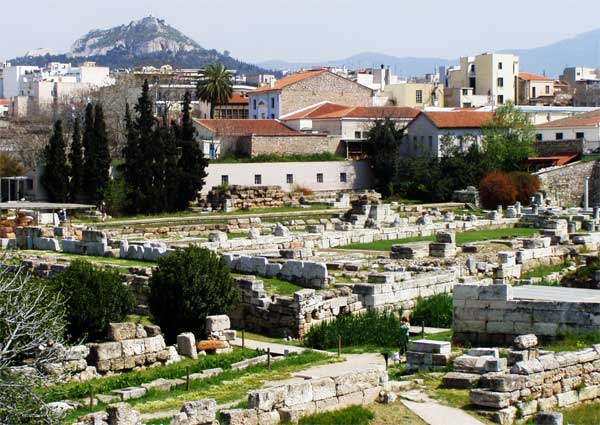
Thisseion and the temple of Hephaestus
The square of Thisseion even more cafes have opened with a view not only to the Acropolis but also to the Stoa of Attalos that emerges from the Ancient Agora. The area around the train station of the same name is suitable for leisurely walks and nonsense on the counters of small sellers, chestnuts and street performers. The temple that dominates the top of the low hill of the Ancient Agora, the best preserved ancient temple in Greece, is also known as Thiseio or temple of Hephaestus.
Syntagma Square
Syntagma Square is in the heart of Athens. This is the location of the Greek Parliament building and all Greek distances are measured from here in kilometers.
The square has many embassies and ministries, the offices of airlines and large companies, banks, and luxury hotels.
Near the square are the National Gardens and behind them the President’s Mansion. Syntagma Square is the center of tourism in Athens. Visitor interest is centered on the Tomb of the Unknown Soldier where the changing of the Evzones Guards is an impressive sight worth seeing, especially when seen with the flocks of pigeons flying up and around them. The Evzones guard the monument 24 hours day, year round.
The Parliament of Greece
The present-day Greek Parliament building lies above the Tomb of the Unknown Soldier. It was the Palace of King Othon and Queen Amalia and was built between 1834 and 1838. The plans were drawn up by the German architect Von Gartner.
This three-story building is constructed of Pentelic marble and limestone. It has a Doric-style propylea (entrance hall), both small and large rooms, the Parliament assembly hall, the Parliament Library, and the offices of the State Council.
The Parliament building is surrounded by the National Gardens, which has entrances on all four sides and stretches from the Panathenaic Stadium to the Zappeion.
Lykabettus
Lykabettus Hill (275 meters or 900 feet) is always beautiful. You can climb it throughout the year and enjoy the superb view that it offers of all points of Athens. You can reach the top on foot up the flight of stairs, by car to the theater, or on the funicular railway from Kolonaki.
During the Middle Ages there was a chapel to Profitis Ilias (the Prophet Elijah) at its summit. Today there is a chapel to Agios Georgios (St. George), which was built after 1835 when Athens had become the capital of Greece.
On its northwest side is a cave with the small Church of Agios Isidoros (St. Isidore). During the summer the Lykabettus Theater plays host to various theatrical performances and concerts. It is a spacious theater with 5,000 seats and occupies one of the most awe inspiring and idyllic sites in Athens.
Kolonaki
The chic square of Athens is Kolonaki, officially known as Philikis Etaireias Square, but commonly called Plateia Kolonaki (Kolonaki Square). The square and the surrounding streets have the most expensive stores in Athens and many pastry-shops, cafes, and bistros. The Gennadios Library on Soudias specializes in Greek books published after 1453. The Museum of Cycladic and Ancient Greek Art is housed on Neofitou Douka. The funicular railway that goes to the top of Lykabettus is in the Kolonaki area.
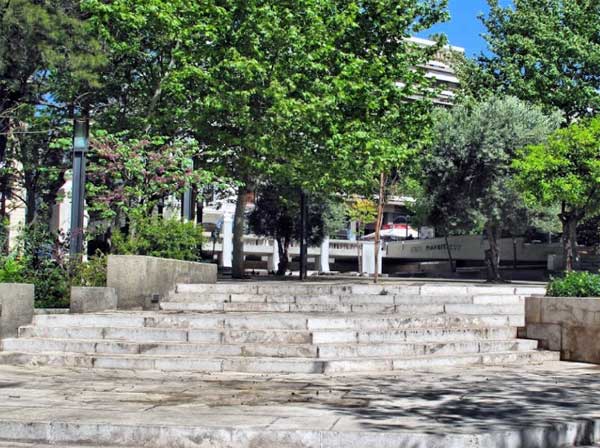
Panepistimiou Street
It you take Panepistimiou (or Eleftheriou Venizelou avenue, as it is officially named) from Syntagma Square toward Omonoia Square you will see many historical buildings, all in a row. On the left is the Grande Bretagne Hotel built to the plans of Hansen.
Iliou Melathron
A bit further down and opposite is the Iliou Melathron (the palatial mansion of Iliou) that has been renovated and houses the Numismatic Museum. It was built by Ernest Ziller for the excavator of Mycenae and Troy, Heinrich Schliemann.
Catholic Church of Agios Dionysios
On the same side of the street and further down is the Catholic Church of Agios Dionysios (St. Denis). This is followed by the Opthalmialogical Hospital built in a Byzantine style and opposite that the beautiful and imposing Bank of Greece. The next building is the neoclassical building of the Agricultural Bank and opposite that, the Athens Academy.
Athens Academy
The Athens Academy is a work by the Greek Baron Sinas built on the plans of Hansen and under the supervision of Ziller. It is done in an Ionic Style. There is a main building with two wings and pediments depicting the birth of Athena. Apollo and Athena are on the two large Ionic columns.
The statues of Socrates and Plato are in front. The National University, founded in 1837, is the middle building on the street. It has propylea with wall paintings from the renaissance of the arts and sciences in Greece. The Festival Hall is majestic. Statues have been erected in front of the university.
The National Library, the third great building here is built in the Doric style and contains over one million volumes of books, manuscripts, gospels, and archetypal. Diagonally opposite the library is the renovated Arsakeio where the Council of State is housed. Going down Panepistimiou you reach the large Square of Omonoia.
Akadimias Street
Akadimias runs parallel to Panepistimiou. The Cultural Center of the Municipality of Athens is here. This building, a true gem from the 19th century, is host to many cultural events. The Theatrical Museum of Athens and the Public Library are housed in the Cultural Center. In the park in front of the center is a statue of the great Greek poet Kostis Palamas. Akadimias starts at Vasilissas Sofias Boulevard near Syntagma and ends at bustling Kaningos Square.
Stadiou Street
Below the university, beginning at Syntagma Square, is Stadiou. It is one of the three large streets that were laid out in the town-plan of 1832 by the young architects Stamatis Kleanthis and Eduard Schaubert (the other two were Athinas and Piraeos) and today is one of the main arteries in the town and near Klauthmonos Square. In the neoclassical Vouros mansion, known as the Old Palace (this is where King Othon and Queen Amalia lived at the start of their reign) is housed the City of Athens Museum. It contains exhibits that cover the history and the development of the Greek capital from the period of the Franks till the present.
Omonoia Square
Together with Syntagma Square, Omonoia is one of the largest and best-known squares in Athens. The main station of the capital’s old metro system has been operating there since the 19th century.
All the main avenues and streets of the city either begin or end there, such as Piraeos avenue (to Piraeus), 3 Septemvriou and Patission street (to the northern suburbs and Mt. Parnitha), and Athinas avenue (to the market, Monastiraki, and the Acropolis).
There are many shops in Omonoia with folk articles for sale and the square itself is a meeting place. Near Omonoia are the National Theater and the Athens Municipal Gallery.
Pedion Areos
Patission (or 28th Oktovriou) starts at Omonoia. Besides the commercial shops and the civic buildings, the National Technical School is also here, a neoclassical building from the 19th century.
There is a superb example of church architecture on Patission, the Church of Agios Loukas (St. Luke) by the architect E. Ziller as well as the Pedion Tou Areos (the Field of Ares) at the intersection with Alexandra’s Boulevard, a marvelous park which every year holds one of the largest book exhibitions in Greece.
Temple of Poseidon
The Temple of Poseidon at Cape Sounion is a classical Greek temple, built between -444 and -440 and partially ruined. This Doric temple dominates the sea at the end of Cape Sounion, at a height of almost 60 meters. The first temple of Poseidon, from the archaic period, was built in freestone, in the same place. It was probably destroyed in -480 by the Persians during the invasion of Greece by Xerxes Ier1. After defeating Xerxes at Salamis, the Athenians deposited at Sounion a captured enemy trireme as a trophy dedicated to Poseidon.
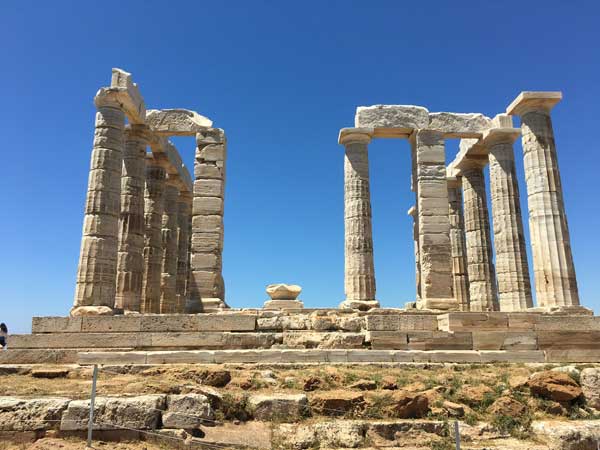
Daphni Monastery
It is the largest monastery complex in Attica and one of the most important monuments of Byzantine art, just about 10 kilometers from the city center, in Dafni.
The monastery is dedicated to the Assumption of the Virgin Mary and its Katholikon (the main church) is famous for the unique mosaic ensemble that decorates it.
After the last restoration works from the earthquake of 1999, the monastery is open to the public again and has been registered in the UNESCO World Heritage List.
